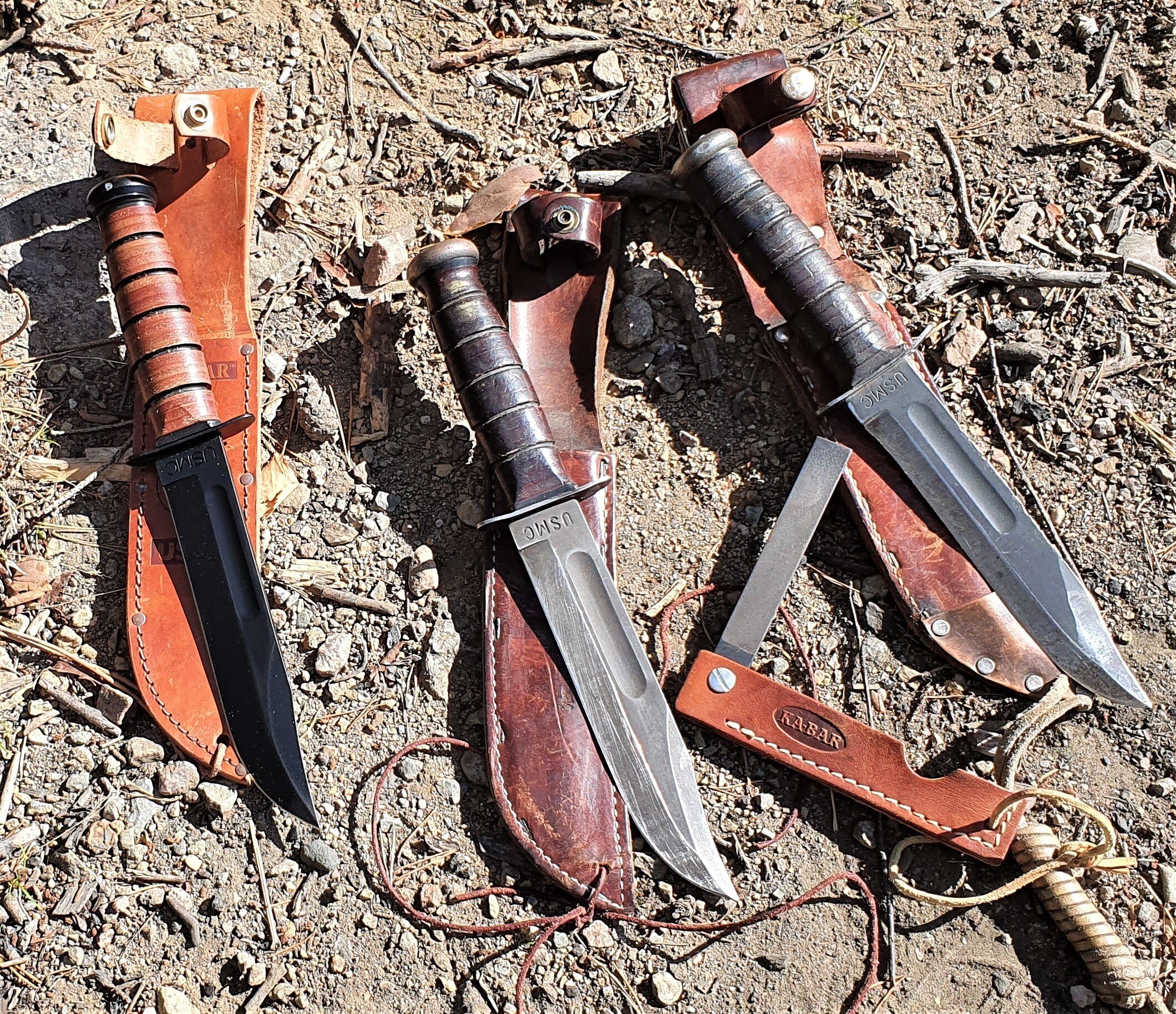The KA-BAR KNIFE by Tyr Neilsen
/My all time favorite knife is the Ka-Bar combat / utility knife. It has been the most famous fixed blade knife in the world since World War II, and it is famous for a reason. Luckily for me, it is an all time favorite of Bjørn Ingebrigtsen, owner of Gammelt og Nytt (Old and New), Norway’s foremost knife specialist store.
Earlier this year I interviewed Bjørn for an Academy of Viking Martial Arts article about historical weapons and the latest in bushcraft and combat equipment: https://www.vikingmartialarts.com/articles/2020/6/28/old-and-new-now-by-tyr-neilsen
During the interview, Bjørn mentioned that some years ago he had his own weekly article called Ukens Knivskarpe (Sharp Knives of the Weeek) in the extremely popular Norwegian magazine Vi Menn (We Men). As I am pretty interested in knives, this gave me an idea, and I asked Bjørn if he would be interested in helping me with some similiar articles. A few weeks later we met up at a local mountain range to have a coffee and talk about knives.
Bjørn was keen to talk about this knife. “This Ka-Bar is one of the first knives I ever owned,” he said as he took the knife from its well-worn leather sheath. “It’s been one of my favorite knives since I was a teenager. I’ve used it on camping trips, hunting trips, in the military and throughout my working life.” Bjørn showed where his Ka-Bar knife has changed shape over the last 45 years through constant sharpening.
“I bought this knife in 1975, took it with me into the military and used it on all military exercises,” Bjørn recollected. “It has been my main hunting knife, and has been used for stabbing, skinning and bone-cutting, as well as splitting firewood for cooking.”
On placing his knife in its customized leather sheath, Bjørn said “I reinforced the tip of the knife sheath with a copper plate on each side, following the advice from a Green Beret soldier who had served in Vietnam.”
Not only was Bjørn satisfied with this knife right from the start, he started importing and selling Ka-Bar knives, and was the first person to have a commercial ad for the Ka-Bar knife in Norway !
As we looked out over the Drammen Fjord, Bjørn gave me a brief history of this Ka-Bar knife, starting with how it got its name. “The Union Cutlery Company began using the name Ka-Bar in 1923 after they received a letter from a fur trapper who had used his Union Cutelry knife to kill a wounded bear that attacked him when his rifle jammed,” Bjørn explained.
“Although it was difficult to read the letter, the words "ka bar", from the phrase "kill a bear" was legible. Soon after recieving the letter, the Union Cutlery Company adopted the name Ka-Bar as its trademark.
“During World War II,” Bjørn continued, “the US Marine Core needed a knife that was stronger and more durable than what they were using. Marines were issued the Ka-Bar knife and praised its combat effectiveness and all-round toughness.
The Ka-Bar became known as the American fighting knife, and in 1952, the Union Cutlery capitalized on the popularity of the knife by changing the company’s name to Ka-Bar Cutlery Inc.” Bjørn started to dig into the ground where we were sitting with his knife. “The Ka-Bar is still used by the US Army, Navy and Marines, and is used for all kinds of situations, from combat to opening cans, cutting wood or wire and even digging trenches.”
LEFT: TYR’S 2019 KA-BAR. MIDDLE: TYR’S 1960’S KA-BAR RIGHT: BJØRN’S 1970’S KA-BAR WITH CUSTOMIZED SHEATH AND KA-BAR KNIFE SHARPENER.







